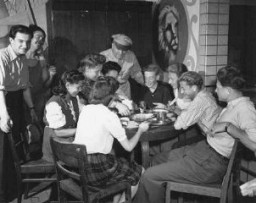You searched for: 海外商城系统源码快速搭建【TG���������@EK7676】平台包网搭建海外商城系统源码快速搭建【TG���������@EK7676】平台包网搭建19Ez42Yfxf
<< Previous | Displaying results 31-40 of 177 for "海外商城系统源码快速搭建【TG���������@EK7676】平台包网搭建海外商城系统源码快速搭建【TG���������@EK7676】平台包网搭建19Ez42Yfxf" | Next >>
-
Passengers on board the Exodus 1947
PhotoPassengers on board the Exodus 1947 refugee ship, which has just arrived at the Haifa port, peer out of cabin windows. The British forcibly returned the refugees to Europe. Haifa, Palestine, July 19, 1947.
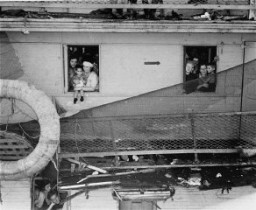
-
A refugee collapses
PhotoAn exhausted Jewish woman from the Exodus 1947 refugee ship is given a drink as British soldiers stand nearby. The British forcibly returned the passengers to Europe. Haifa, Palestine, July 19, 1947.
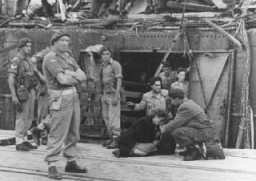
-
Jews captured during the Warsaw ghetto uprising
PhotoSS personnel capture two Jewish resistance fighters who were pulled from a bunker during the suppression of the Warsaw ghetto uprising. Warsaw, Poland, April 19-May 16, 1943.
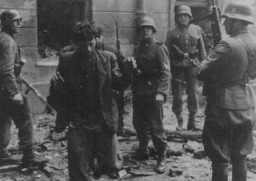
-
Jews captured during the Warsaw ghetto uprising
PhotoMembers of the Jewish resistance are captured by SS troops on Nowolipie Street during the suppression of the Warsaw ghetto uprising. Warsaw, Poland, April 19-May 16, 1943.
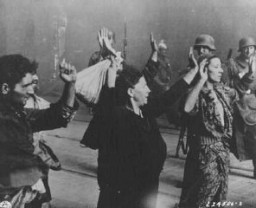
-
Adolf Hitler leaves the Reich Chancellery after meeting with President Paul von Hindenburg
PhotoA crowd of saluting Germans surrounds Adolf Hitler's car as he leaves the Reich Chancellery following a meeting with President Paul von Hindenburg. Berlin, Germany, November 19, 1932.
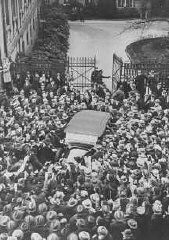
-
Elie Wiesel with his wife and son during the Faith in Humankind conference
PhotoElie Wiesel (right) with his wife and son during the Faith in Humankind conference, held several years before the opening of the United States Holocaust Memorial Museum. September 18–19, 1984, in Washington, DC.
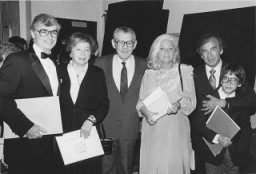
-
Captured Jewish resistance fighters in Warsaw
PhotoJewish resistance fighters who were captured by SS troops during the Warsaw ghetto uprising. Warsaw, Poland, April 19-May 16, 1943. The original German caption reads: "These bandits offered armed resistance."
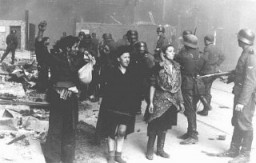
-
Janowska
ArticleIn 1941, the Nazis established Janowska camp. It was primarily used as a forced-labor and transit camp.
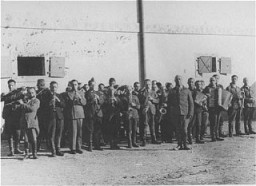
-
Helen Keller
ArticleHelen Keller was an author, suffragist, and disability rights advocate. Her socialist and anti-war writing was burned under the Nazi regime in 1933. Learn more.
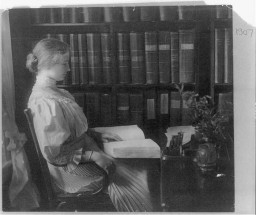
-
Eschwege Displaced Persons Camp
ArticleAfter WWII, many Holocaust survivors, unable to return to their homes, lived in displaced persons camps in Germany, Austria, and Italy. Read about Eschwege DP camp.
